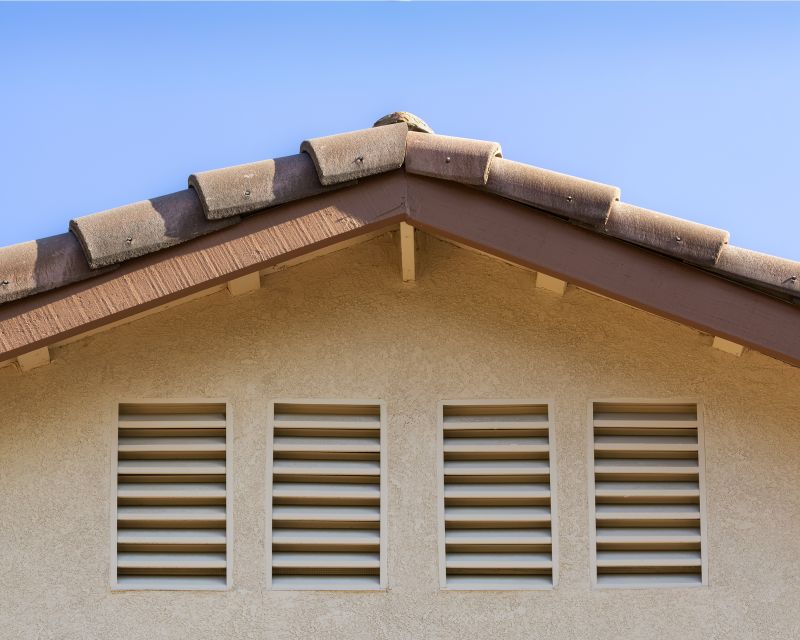Expert Picks for Attic Ventilation Replacement Solutions
Find out which ventilation products are favored by professionals for reliability and performance in attic airflow management.
 Attic ventilation is a crucial component of home maintenance, helping to regulate temperature and moisture levels within the attic space. Proper ventilation can prevent issues such as mold growth, wood rot, and excessive heat buildup, which may impact the overall integrity of the home. When replacing attic ventilation systems, homeowners have a variety of options to consider, ranging from traditional vents to modern, energy-efficient solutions. Selecting the right products involves understanding the specific needs of the attic space, including size, airflow requirements, and installation conditions.
Attic ventilation is a crucial component of home maintenance, helping to regulate temperature and moisture levels within the attic space. Proper ventilation can prevent issues such as mold growth, wood rot, and excessive heat buildup, which may impact the overall integrity of the home. When replacing attic ventilation systems, homeowners have a variety of options to consider, ranging from traditional vents to modern, energy-efficient solutions. Selecting the right products involves understanding the specific needs of the attic space, including size, airflow requirements, and installation conditions.
Top Overall Option
Attic Ventilation Fan System
An attic ventilation fan system offers a comprehensive approach to air circulation by actively moving air in and out of the attic space. These systems typically include adjustable fans and thermostats to optimize airflow based on temperature and humidity levels. They are designed for durability and ease of installation, making them a versatile choice for various attic configurations.
Types of Products For Attic Ventilation Replacements
Ridge Vents
Long, continuous vents installed along the ridge of the roof to facilitate natural airflow from eaves to ridge.
Soffit Vents
Vents placed under the eaves to allow cool air to enter the attic space, promoting proper circulation.
Gable Vents
Vents installed on the gable ends of the attic to provide cross-ventilation and improve airflow.
Attic Exhaust Fans
Powered fans that actively expel hot or moist air from the attic, often equipped with thermostats or humidistats.
Roof Vents
Vents installed directly on the roof surface to facilitate passive airflow and prevent heat buildup.
Turbine Vents
Whirling vents that use wind energy to draw air out of the attic without requiring electrical power.
Soffit Intake Vents
Vents designed for installation in soffits to allow fresh air to enter the attic space.
Static Vents
Fixed vents that provide passive airflow without moving parts, often used in combination with other vent types.
Powered Ridge Vents
Motorized vents installed along the ridge to actively exhaust hot air from the attic.
Attic Louvers
Adjustable or fixed louvers that facilitate passive ventilation and can be integrated into roof or wall structures.
Popular Choices
Electric-powered fans that help remove excess heat and moisture, often with automatic controls.
Continuous vents along the roof ridge to promote natural airflow and ventilation.
Vents installed under eaves to allow fresh air intake, supporting passive ventilation.
Wind-driven vents that rotate to exhaust hot air without electrical power.
Vents on gable ends that facilitate cross-ventilation within the attic.
Passive vents installed directly on the roof surface for continuous airflow.
Fixed, non-moving vents that provide passive airflow combined with other ventilation methods.
Motorized ridge vents that actively exhaust hot air from attic spaces.
Adjustable louvers that help control airflow and can be integrated into various attic designs.
Fans equipped with humidity sensors to help manage moisture levels automatically.
Modern attic ventilation products are designed to improve air circulation while minimizing energy consumption and maintaining durability over time. Many options incorporate features that resist weather elements, prevent debris ingress, and operate quietly. It is essential to evaluate the compatibility of these products with existing roofing structures and to ensure proper installation for optimal performance. Consulting with a professional can help determine the most suitable solutions based on the attic's characteristics and the local climate.
In addition to functional considerations, aesthetics and ease of maintenance also play roles in selecting attic ventilation products. Some designs blend seamlessly with roofing materials, while others may require additional finishing touches. Regular inspection and cleaning of ventilation components can extend their lifespan and ensure consistent airflow. With a broad range of products available, homeowners can find solutions tailored to their specific attic ventilation needs, whether for replacement or upgrade purposes.
Key Buying Considerations
- Attic size and volume to determine appropriate ventilation capacity.
- Type of ventilation system suitable for your attic, such as passive or active options.
- Compatibility with existing roofing and attic structure for easy installation.
- Material durability and resistance to weather elements to ensure longevity.
- Energy efficiency features to minimize power consumption.
- Ease of maintenance and accessibility for cleaning or repairs.
- Noise levels produced by powered ventilation options.
- Proper placement of vents to promote optimal airflow and prevent air stagnation.
- Local climate conditions that may influence ventilation needs.
- Compliance with local building codes and regulations.
- Aesthetic considerations to match roof and home design.
- Availability of automatic controls like thermostats or humidistats.
- Potential need for professional installation for complex systems.
- Cost considerations including initial investment and long-term operation.
This content may contain affiliate links. We may earn a commission at no additional cost to you, which helps support the creation of helpful and informative content.
